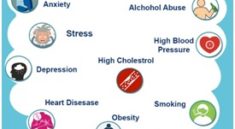Those familiar with the symptoms of vertigo know how frustrating and distressing they can be. Vertigo affects many individuals worldwide, yet some instances are more severe than others. Depending on its intensity, motion sickness may ruin activities as varied as flying, biking, driving, roller coasters, and even simple head turns. Happily, vertigo can be treated well.
Vertigo is a sign of a balance disturbance, not an illness in and of itself. It’s when a person standing still has dizziness and the sensation that they are moving. Even when sitting still, a person with vertigo may have a sudden and disorienting sense of movement or the room spinning, which may lead to sickness and even vomiting.
This may be distressing, and it’s common for people who experience vertigo to avoid engaging in activities they like out of dread of another episode. Depending on the cause, dizziness may be treated in several ways. Medicines like antihistamines and antibiotics may be prescribed by your doctor (if the reason is a bacterial infection in the ear).
Treatment For Dizziness
Despite its prevalence as a cause for seeking medical care, vertigo is often misdiagnosed and improperly managed. The sensation of dizziness is not an illness in and of itself but rather a sign of something more serious. Its symptoms are similar to fainting, presyncope, anxiety, and heart issues; therefore, it’s easy to misdiagnose.
When a comprehensive examination is neglected in favor of excessive diagnostic imaging and other procedures, the latter is often carried out for no apparent reason. Nevertheless, it is necessary to consult a licensed mental health professional or medical doctor when engaging in vertigo treatment. Only a limited number of medical practitioners have been adequately trained to diagnose and treat this illness.
Unfortunately, a diagnosis of this condition cannot be made by magnetic resonance imaging (MRI). Otoconia, or calcium particles in the inner ear, cause this condition when they migrate to the vestibular labyrinthine canal networks. In such a case, every movement of the head causes vertigo. Vertigo may be debilitating, but it usually goes away as you stop moving your head.
The affected canal system must be explicitly targeted for treatment. If you don’t get help, your vertigo may worsen throughout therapy. To further complicate things, the treatment will be ineffective if the diagnosis is not positional vertigo. Even if alternative therapies are tried, they will be weak until and until the underlying cause of vertigo, positional vertigo, is addressed.
As a result, obtaining an accurate diagnosis is of the utmost importance to ensure that the appropriate treatment is administered. There is a diverse number of possible beginnings for vertigo. As a result, no one strategy is universally accepted for dealing with it. The therapy for vertigo is contingent on the underlying cause of the condition. Those familiar with the symptoms of dizziness are aware of how distressing episodes may be.
Nausea and vomiting, sometimes severe, are common side effects. Electrolyte imbalances and other health complications are two outcomes of chronic vomiting. People with vertigo often experience dizziness and balance issues due to the condition’s natural adaptation to the continual spinning feeling. A slip may influence the trajectory of a person’s life if they don’t get help for it.





